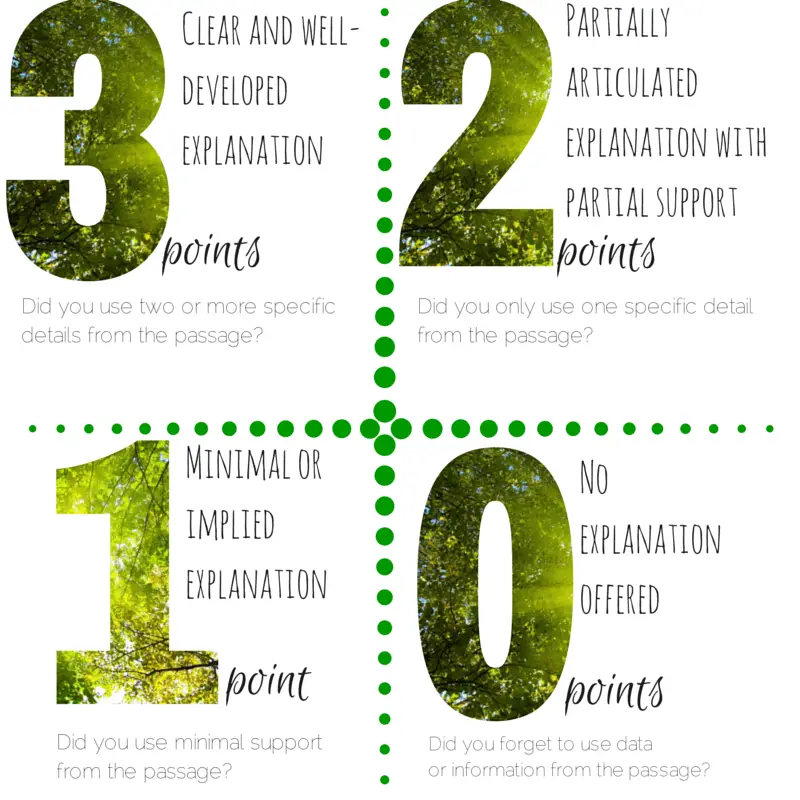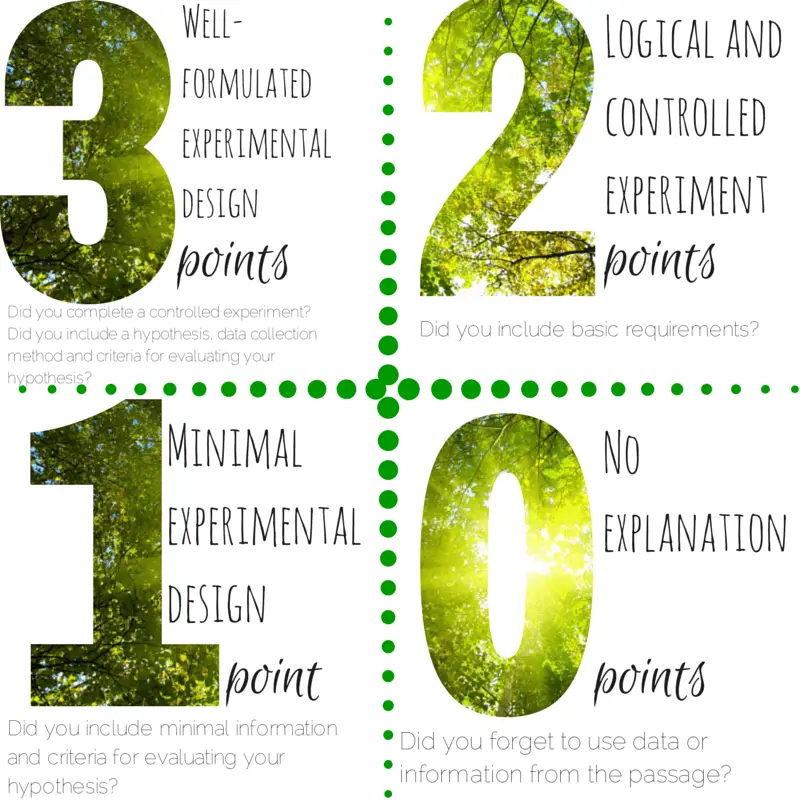Starting 2018, the Science module will no longer include Short Answer items.
Today, we’re going to give you an informational guide about how to write a short answer response for the GED® Science Exam. We’re also going to show you how the response will be scored, and give you questions you should ask yourself for editing. Additionally, we will give you tips on proof-reading.
Writing a Short Answer Response for the GED® Science Exam.
Steps for Responding to the Science Prompt
1. Read the question.
It’s critical that you read the question before you do anything else. Once you read the question, be sure that you understand it completely. A good way to make sure you understand the question is to reword it. Chances are, if you can reword it, then you fully understand what it is asking.
The science question-prompt will always ask you to make two types of responses. It is important that you know what type of response you are being asked to complete. As you read the question, ask yourself?
- Am I creating a paragraph response? OR
- Am I designing an experiment?
Related Topic: GED 101: 2019 GED Practice Tests, GED Classes for GED Exam – 1 Stop GED Programs Guide
2. Read the passage.
Once that you understand the question, go ahead and read the passage. As you read, pay attention to the passage, asking yourself the following:
- Specific details I can find that relate to the question.
- Information I can find to support or counter the question.
- Major points or claims the author is making.
Related Topic: Free GED Practice Test
3. Construct your thesis.
Whether you are designing an experiment or writing a paragraph response, you must include a thesis.
Paragraph Response:
- Your thesis is used to state your position
Designing an Experiment:
- Your thesis is used to describe your experiment design
Related Topic: Online GED Classes
4. Brainstorm & Plan Your Response.
Use your whiteboard to plan out your response before you start writing.
- Create your main point
- Find data, information or statements from the text that support your main point
- Briefly outline your explanation
Related Topic: GED Study Guide
5. Write Your Response.
Paragraph Response Checklist:
- Must include actual information, facts and/or data from the text
- Should be one to two paragraphs in length
- Includes a well-constructed thesis statement
Designing an Experiment Checklist:
- A well-stated hypothesis
- A clear design
- An easy to understand method of collecting data
- A means of evaluating your hypothesis
6. Revise
Make sure that before you submit your response, you take the time to time to revise.
Edit for:
- Complete sentences
- Well-developed and organized thought process
- Clear structure
Check our GED® Writing an Extended Response: RLA Test
Grading
The criterion for grading the Paragraph Response essays will be scored on a three-point scale.

The criterion for grading the Experimental Design responses will be scored on a three-point scale.
Practice Prompt
It’s important that you practice writing responses as much as you possibly can. This next portion will take you through the six-step process above by using an example prompt. Please, follow along!
Step One: Read the prompt.
In the GED® Science Exam, you should begin by reading the question prompt.
Here is our sample practice prompt:
Design a controlled experiment that would help Smith test his hypothesis. Be sure to include a method and descriptions of data collection. Also, explain how researchers would know whether his hypothesis is supported by the experimental data.
We have GED Social Studies Classes Online
Step Two: Read the passage.
Here is our sample passage:
Smith is a florist, who owns a local flower shop. He recently bought ten acres of land to farm plants and flowers on, in order to sell them at his flower shop. Before he begins farming, he wants to test the acidity levels to determine which area will best support his different types of flowers.
Smith wants to grow a large crop of begonias, which prosper in soils with low acidity levels. He also wants to grow azaleas, which do best in soil with high acidity levels.
Smith wants to separate the plants by growing one type of plant per acre.
Smith believes that if he can determine soil acidity levels, he will be able to properly grow his plants and flowers.
Step Three: Construct your thesis.
Okay, so we know that the prompt is asking us to design an experiment. And, when we are designing an experiment, our thesis statement is used to describe our experiment. Therefore, my thesis is going to be:
To determine what soil acidity levels would create the best growing conditions for his plants, Smith will need to test the pH levels of each acre of soil. Areas with a high pH level will be more acidic, while areas with lower pH levels will be less acidic.
Step Four: Brainstorm and plan.
Now that we have our thesis, we need to figure out a method for collecting data, measuring data and determining which plants should go where. For this, we are quickly going to brainstorm ideas about what the passage tells us, as well as what we already know. Personally, for this process, I like to make a list of what I know vs. what the passage says in order to determine a sense of order.
We know: pH levels will show whether acidity levels are high or low.
The passage says: There are ten acres of land.
We know: We should divide the land evenly to determine different levels of soil acidity.
The passage says: Smith wants to grow one type of plant per acre.
The passage says: Begonias grow well in low acidity soil, while azaleas grow well in high acid levels of soil.
More review materials HERE
Step Five: Write.
This would be the portion where I would JUST start writing. You see, I can apply everything I know from my brainstorming list (above) to my response.
Smith would need to begin by taking ten different soil samples: one from each of the ten acres, labeling each sample with its corresponding acre. He would need to get a pH soil test kit. Next, Smith would need to test each of the ten acre samples by following the directions on the pH soil test kit. He should then record his answers. Determining the pH soil acidity, he could then determine which plant would prosper in each of the acres.
Step Six: Revise.
I would then use this time to go back and edit for grammatical errors, missing elements and make sure that I have included information from the passage.
For example, I might want to add that the begonias would be planted in acres with a low pH and azaleas in a high pH level.
Hopefully this sample has given you the tools you need to write your own refection. Remember, you don’t need luck, you just need confidence and practice.
Study On,
Danielle
Related Topics:
- GED Math
- GED Science Study Guide
- GED Social Studies Prep Guide
- GED Reasoning through Language Arts Guide
- 6 Quick Tips to Prepare for the GED Science Test
- 3 Common Reasons Why Test-takers Fail GED
- How to Fail-Proof Your GED Math Test
- Why GED Practice Tests – 3 Reasons You Should Take GED Practice Test Now
- 4 Things You Can Do After Passing the GED



